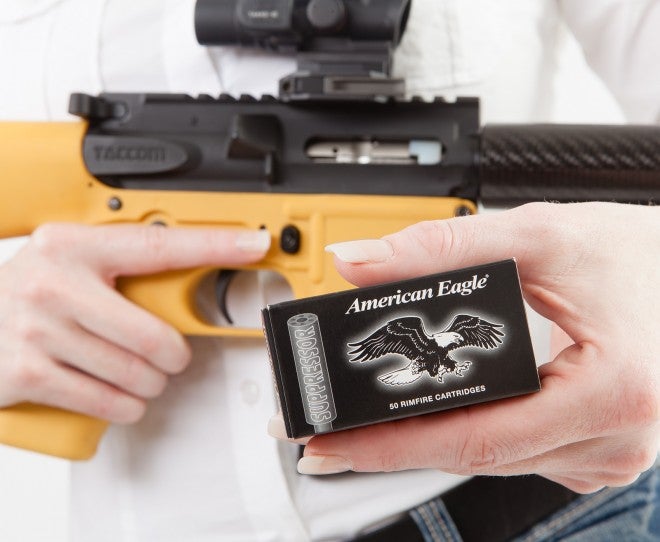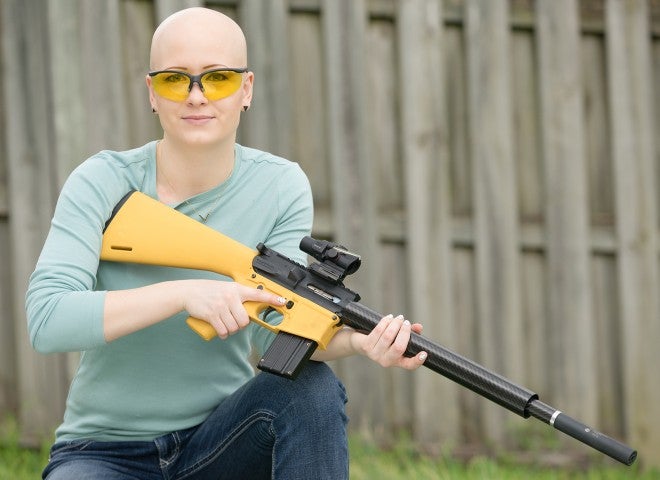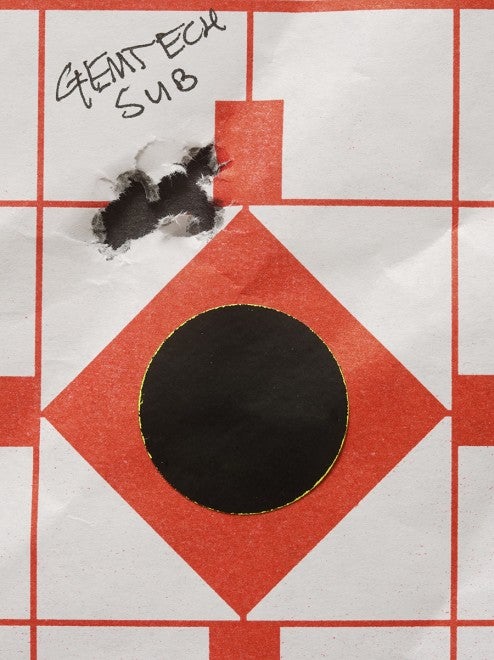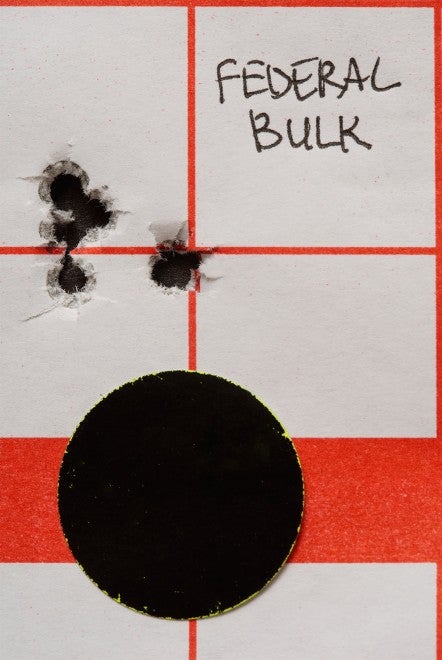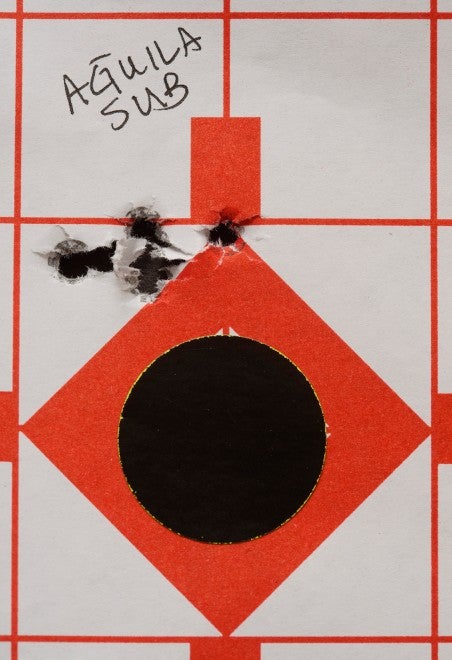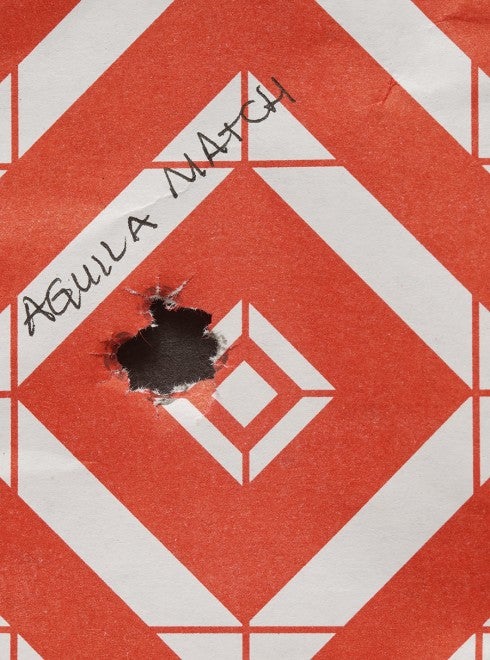Review: TacCom .22 Carbon Fiber AR Upper
Oleg Volk 04.07.15

This story begins with DJ Petrou, a 3-gun competitor whose taste in guns differs a bit from mine. I am all for peace, comfort, and quiet, while he will put up with the loudest brakes to get quicker return on target. When he directed me to Taccom site, I was skeptical. Being a rimfire fan, I went straight to the page about .22 AR uppers and found the lightest version to run as a comparison with the Volquartsen ultralight 10-22. I planned to put this upper on an all-plastic lower with a telestock for use in training kids. For that reason, I picked the least front-heavy version without a rail for the front sight. The initial training is done with a red dot to account for cross-eye dominant learners.
When the lower arrived, I found that it wouldn’t fit the upper and ended up using a Cavalry Arms (identical to the current GWACS Armory) lower. It was equally light but longer length of pull. That placed the rifle into the adult corner of the armory.
The upper is factory threaded for suppressors and other muzzle devices. It arrived with two 15-round Black Dog Machine magazines. These proved ideal in use. Easily loaded without a mechanical aid, they were 100% reliable throughout the testing.
The upper came with two feed ramps: one metal for unsuppressed use, the other nylon for quieter cycling suppressed. It worked as designed, reducing the action noise to a minimum.
Carbon fiber used for both the forend and the barrel shroud has two substantial advantages: light weight and rigidity. The rifle with 1.5x compact ACOG, AAC Pilot sound suppressor and a full magazine weighs only 4.7lbs. It can be easily controlled with just one hand. By itself, the upper is slightly back-heavy, but the half-pound suppressor threaded on the front evened it out to perfection. All shooters found the balance ideal for accurate shooting. Now updated for easier maintenance, even the original Pilot was extremely effective at reducing the noise of the report.
Rigidity of the barrel shroud reduced variations between different .22 loads to insignificant. Carbon fiber has very low heat conductivity and won’t transfer the barrel heat to the hand. At the same time, it also insulates the metal barrel liner from the air, reducing cooling. A centerfire barrel used for high volume shooting would overheat quicker if wrapped like this. In a rimfire or a hunting centerfire rifle, that’s a reasonable compromise. The handguard doesn’t have an attachment point for a sling. It would have to be installed on the front of the receiver, and a sling thus configured would be useful for carry but not for support.
Cycling was 100% reliable with CCI Mini Mags, Stingers, Aguila subsonics and match, Federal 550rd bulk box. I forgot the Federal plated subsonics shown in the photo and so didn’t test them. To my great surprise, the accuracy was excellent. While this isn’t a bench-rest upper, I was able to get credible results by resting it on a plastic pistol case with the foam loner thrown over the top. Considering that my optic was a 1.5x scope with a circle-dot reticle, the groups seems like an excellent start.
Gemtech subsonic .22 gave consistent 5-shot groups in the 0.5″ range. I shot at least two groups with every load to make sure that they were similar and reflected the actual performance.
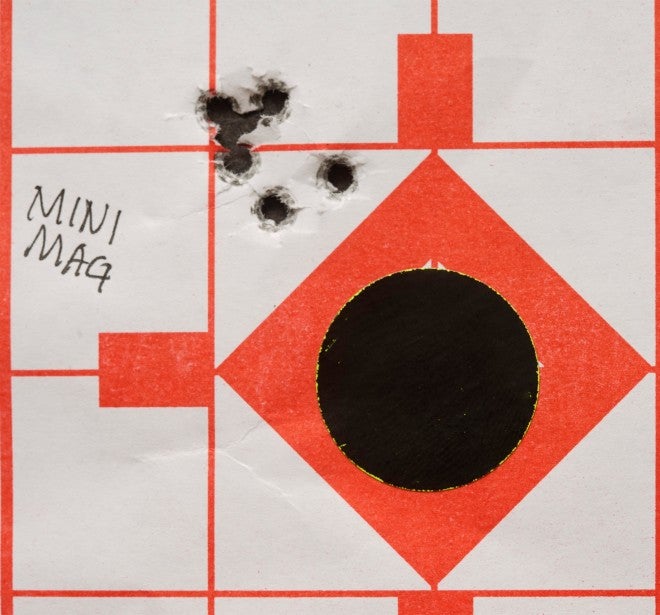
CCI Stinger did no better than 1.5″ at 25 yards, a similar performance to the AR7 survival rifle with iron sights. I am pretty sure that’s the limit of performance for that load in a regular 1:16 twist barrels.
40-gr Aguila subsonic was the quietest of the bunch, but the Gemtech load is more accurate and so would be preferred. Ultimately, for a very slightly greater but still ear safe report, the accuracy winner was Aguila rifle match.
0.3″ across and consistent from group to group! This works out to 1.2MOA, a very respectable accuracy for a featherweight semi-auto .22 upper.
On the same range trip, we used this rifle for training a new shooter. The light weight and the consistency of most controls with AR15 proved very helpful, and the 1.5x scope still allowed use of both eyes for rapid fire. The one divergence between Taccom upper and the regular AR15 is the non-functional bolt stop/release lever. I would have preferred to have that functionality.
You may have noticed that the scope is placed further back in the outdoor photos. I tend to shoot with nose to the charging handle, but some of the shorter learners found the stock too long for that. With the Bobro QD mount, we could move the scope in seconds and keep on going.
This upper is currently my favorite range toy. It’s light, accurate and a delight to shoot. At $475 for the most fancy upper, Taccom is a pretty economical choice when it comes to competition-grade hardware.
